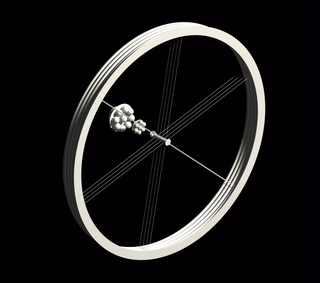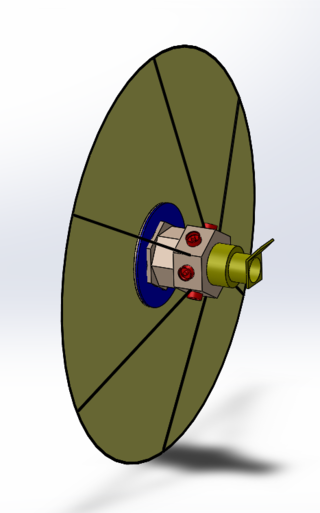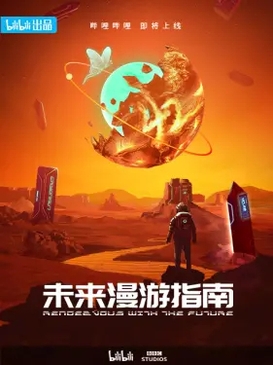
Interstellar travel is the hypothetical travel of spacecraft from one star system, solitary star, or planetary system to another. Interstellar travel is expected to prove much more difficult than interplanetary spaceflight due to the vast difference in the scale of the involved distances. Whereas the distance between any two planets in the Solar System is less than 55 astronomical units (AU), stars are typically separated by hundreds of thousands of AU, causing these distances to typically be expressed instead in light-years. Because of the vastness of these distances, non-generational interstellar travel based on known physics would need to occur at a high percentage of the speed of light; even so, travel times would be long, at least decades and perhaps millennia or longer.

The Bussard ramjet is a theoretical method of spacecraft propulsion for interstellar travel. A fast moving spacecraft scoops up hydrogen from the interstellar medium using an enormous funnel-shaped magnetic field ; the hydrogen is compressed until thermonuclear fusion occurs, which provides thrust to counter the drag created by the funnel and energy to power the magnetic field. The Bussard ramjet can thus be seen as a ramjet variant of a fusion rocket.

A generation ship, or generation starship, is a hypothetical type of interstellar ark starship that travels at sub-light speed. Since such a ship might require hundreds to thousands of years to reach nearby stars, the original occupants of a generation ship would grow old and die, leaving their descendants to continue traveling.

An interstellar probe is a space probe that has left—or is expected to leave—the Solar System and enter interstellar space, which is typically defined as the region beyond the heliopause. It also refers to probes capable of reaching other star systems.

Abraham "Avi" Loeb is an Israeli-American theoretical physicist who works on astrophysics and cosmology. Loeb is the Frank B. Baird Jr. Professor of Science at Harvard University, where since 2007 he has been Director of the Institute for Theory and Computation at the Center for Astrophysics. He chaired the Department of Astronomy from 2011–2020, and founded the Black Hole Initiative in 2016.

An electric sail is a proposed form of spacecraft propulsion using the dynamic pressure of the solar wind as a source of thrust. It creates a "virtual" sail by using small wires to form an electric field that deflects solar wind protons and extracts their momentum. The idea was first conceptualised by Pekka Janhunen in 2006 at the Finnish Meteorological Institute.

An interstellar object is an astronomical object in interstellar space that is not gravitationally bound to a star. This term can also be applied to an object that is on an interstellar trajectory but is temporarily passing close to a star, such as certain asteroids and comets. In the latter case, the object may be called an interstellar interloper.

LARES is a passive satellite system of the Italian Space Agency.
A photon rocket is a rocket that uses thrust from the momentum of emitted photons for its propulsion. Photon rockets have been discussed as a propulsion system that could make interstellar flight possible, which requires the ability to propel spacecraft to speeds at least 10% of the speed of light, v ≈ 0.1c = 30,000 km/s. Photon propulsion has been considered to be one of the best available interstellar propulsion concepts, because it is founded on established physics and technologies. Traditional photon rockets are proposed to be powered by onboard generators, as in the nuclear photonic rocket. The standard textbook case of such a rocket is the ideal case where all of the fuel is converted to photons which are radiated in the same direction. In more realistic treatments, one takes into account that the beam of photons is not perfectly collimated, that not all of the fuel is converted to photons, and so on. A large amount of fuel would be required and the rocket would be a huge vessel.

The G-Cloud is an interstellar cloud located next to the Local Interstellar Cloud, within the Local Bubble. It is unknown whether the Solar System is embedded in the Local Interstellar Cloud or in the region where the two clouds are interacting, although the Solar System is currently moving towards the G-Cloud. The G-Cloud contains the stars Alpha Centauri and Altair.

Technosignature or technomarker is any measurable property or effect that provides scientific evidence of past or present technology. Technosignatures are analogous to biosignatures, which signal the presence of life, whether intelligent or not. Some authors prefer to exclude radio transmissions from the definition, but such restrictive usage is not widespread. Jill Tarter has proposed that the search for extraterrestrial intelligence (SETI) be renamed "the search for technosignatures". Various types of technosignatures, such as radiation leakage from megascale astroengineering installations such as Dyson spheres, the light from an extraterrestrial ecumenopolis, or Shkadov thrusters with the power to alter the orbits of stars around the Galactic Center, may be detectable with hypertelescopes. Some examples of technosignatures are described in Paul Davies's 2010 book The Eerie Silence, although the terms "technosignature" and "technomarker" do not appear in the book.
Atmosphere-breathing electric propulsion, or air-breathing electric propulsion, shortly ABEP, is a propulsion technology for spacecraft, which could allow thrust generation in low orbits without the need of on-board propellant, by using residual gases in the atmosphere as propellant. Atmosphere-breathing electric propulsion could make a new class of long-lived, low-orbiting missions feasible.

Project Dragonfly is the first conceptual design study that assesses the feasibility of a laser-propelled interstellar probe, conducted by the Initiative for Interstellar Studies. Contrary to past unmanned interstellar mission studies such as Project Daedalus and Project Icarus, the focus is particularly on a small spacecraft. The project was founded in 2013 by the Initiative for Interstellar Studies (i4is).

Breakthrough Starshot is a research and engineering project by the Breakthrough Initiatives to develop a proof-of-concept fleet of light sail interstellar probes named Starchip, to be capable of making the journey to the Alpha Centauri star system 4.34 light-years away. It was founded in 2016 by Yuri Milner, Stephen Hawking, and Mark Zuckerberg.

ʻOumuamua is the first interstellar object detected passing through the Solar System. Formally designated 1I/2017 U1, it was discovered by Robert Weryk using the Pan-STARRS telescope at Haleakalā Observatory, Hawaii, on 19 October 2017, approximately 40 days after it passed its closest point to the Sun on 9 September. When it was first observed, it was about 33 million km from Earth and already heading away from the Sun.
Project Lyra is a feasibility study of a mission to interstellar objects such as ʻOumuamua and 2I/Borisov, initiated on 30 October 2017 by the Initiative for Interstellar Studies (i4is). In January 2022, researchers proposed that a spacecraft launched from Earth could catch up to 'Oumuamua in 26 years for further close-up studies.

2I/Borisov, originally designated C/2019 Q4 (Borisov), is the first observed rogue comet and the second observed interstellar interloper after ʻOumuamua. It was discovered by the Crimean amateur astronomer and telescope maker Gennadiy Borisov on 29 August 2019 UTC.

Project Hyperion, launched in December 2011 by Andreas M. Hein in the context of Icarus Interstellar, was a project aimed at performing a preliminary study that defined integrated concepts for a crewed interstellar starship or generation ship. This was a two-year study mainly based out of the WARR student group at the Technical University of Munich (TUM). The study aimed to provide an assessment of the feasibility of crewed interstellar flight using current and near-future technologies. It also aimed to guide future research and technology development plans as well as to inform the public about crewed interstellar travel.
The Galileo Project is an international scientific research project to systematically search for extraterrestrial intelligence or extraterrestrial technology on and near Earth and to identify the nature of anomalous Unidentified Flying Objects/Unidentified Aerial Phenomena (UFOs/UAP).

Rendezvous with the Future is a 2022 television series commissioned by Bilibili and produced by BBC Studios which explores the science behind the science fiction of the award-winning writer Liu Cixin. The series premiered in China on 16 November 2022 and has been watched by a combined audience of more than 70 million. It was awarded 'China Story: Best Documentary Series' at the Guangzhou International Documentary Film Festival.















